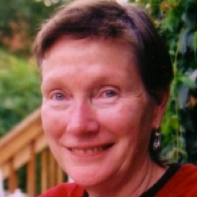Of 150,000 First Nations children in Canada, more than 3000 died in the residential school system, which ran from the 1870s until the 1990s.
These shocking findings are the result of the first systematic search of government and school records, and the number is expected to rise as more documents come to light. At least 500 of these victims still remain nameless because it was policy not to report the deaths.
The leading cause of the death of so many native children was disease—especially TB—but malnutrition, fire, drowning, and suicide followed in that order.
Many children were mentally, physically, and sexually abused, and then committed suicide or died of exposure in the frigid North while attempting to flee the schools.
Student deaths were so much a part of the residential school system that architectural plans for many schools included cemeteries laid out in advance.
Native children were forced to attend these residential schools under the federal policy of civilizing aboriginals by disrupting their traditional education. This led to loss of native languages and cultural identities.
In fact, this cultural genocide was still practiced in provinces like Nova Scotia, where only 25 years ago it was illegal even for adult Mi’kmaq natives to gather together in a drum circle!
Today, systematic under-funding (22% less) of child-welfare services on First Nations reserves means that Canadian aboriginals are re-living the residential school nightmare. Because many reserves don’t have the resources to keep children safe when their families are struggling, the children are taken away and sent into institutional care by the thousands.
This is what Shawn Atleo of the Assembly of First Nations told the Canadian human Rights Tribunal in late February. Poverty is now divorcing native children from their families and cultural communities.
Both the Crown and the Conservative government continue to disregard the treaties and constitutional rights of the First Nations. No meaningful dialogue has happened between Harper’s government and the elected Aboriginal leadership.
Tom Mulcair of the New Democrat Party is the only one who has urged Prime Minister Harper to make good on the promises his government made to aboriginal leaders in January 2012; it was then that he voiced a commitment to do better by working in partnership with First Nations.
Furthermore the government issued a Statement of Apology back in 2008, which was delivered by PM Harper, in which he said, “There is no place in Canada for the attitudes that inspired the Indian Residential Schools system to ever prevail again.”
Yet Harper’s government, without consultation and without respect for signed treaties, continues to force legislation (esp. Bill C-45) upon First Nations, Inuit and Metis.
Thus the current Idle No More grassroots movement is an important vehicle to influence not only positive action re: sustainable environment, but also the rights of Canada’s indigenous people and their children, holding Harper to his promises.
Linda Lewis met the Vidyadhara Chogyam Trungpa Rinpoche in 1972 and, following Rinpoche’s invitation, immediately moved to Boulder, Colorado to be a part of his young and vital sangha. The predominant themes in her life have been teaching in contemplative schools–Vidya, Naropa, and the Shambhala School in Halifax, Nova Scotia–and studying, practicing, or teaching his Shambhala Buddhadharma wherever she finds herself.
Like elephant enlightened society on Facebook.
Assistant Ed: Olivia Gray/Ed: Bryonie Wise










Read 5 comments and reply